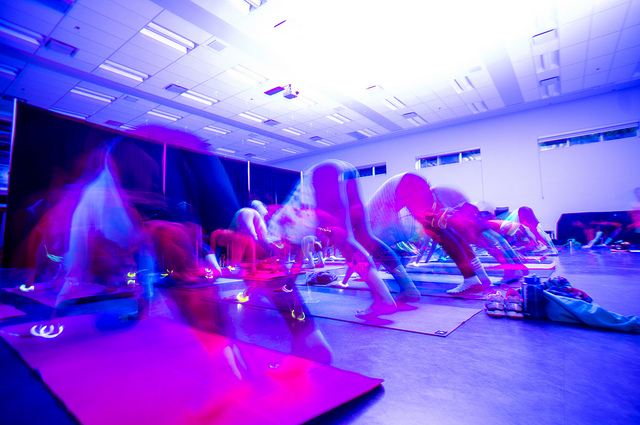Teachers say some whacky things in yoga classes.
I am guilty of this myself.
For people who are new to yoga, these non-descriptive cues can be unhelpful and kind of annoying.
For those new to yoga, here are a few commonly used cues and what they actually mean:
“Shine your Heart“
No, not shine like an apple or silverware. Shining our heart is the act of reaching our chest up and forward. This requires a subtle engagement of our shoulders and helps us to broaden through our chest.
“Inhale to shine your heart, exhale lead with your heart as you fold forward.”
Often heard in: Forward folds and back bends.
“Lengthen your Spine”
Often used in folding transitions and long balancing postures, “lengthen your spine” can be a confusing cue. How in the world can we make out bones longer? This cue can have multiple meanings depending on it’s context.
1. It can be used to help resist rounding or hunching forward.
2. Other times it can be used as a cue of engagement or trying to ‘grow’ taller. When we think about trying to grow longer and taller you begin to engage muscle along the centerline of the body, the neck, the shoulders, the core and even the pelvic floor. This centerline awareness is key to holding many asanas.
“Inhale lengthen your spine as you lift into tadasana.”
Often heard in: Standing and balancing postures.
“Lengthen your Side Bodies”
This is another cue to engage. Like growing your spine long, lengthening your side bodies is a cue meant to help us find an engagement of our centerline muscles. This cue is more often use in side reaching postures, such as triangle, where we can have the tendency to arch, rather than lengthen.
Thinking about growing both sides of your body longer can counter act this natural trend to arch.
“As you inhale lengthen through your side bodies and reach forward.”
Often heard in: Triangle, side angle, and side plank.
“Draw your Naval Up and In”
This is the same as uddanda bhanda, but that phrase is even more confusing! This cue is about finding not only a engagement of the core but also of the pelvic floor which can be tricky to feel.
The best place to feel this cue is in downward facing dog. First begin feel your naval drawing closer to your spine while you breath freely. Then keeping the inward movement imagine your naval drawing up behind your ribs. While of course this will never actually happen, using this visualization you feel the pelvic floor engage.
“Draw your naval up and in to find stability.”
Often heard in: Downward facing dog, boat pose, and inversions.
“Swan Dive”
This is one I find especially silly, but I catch myself cuing it all the time. This cue is meant to help us not only lead with our heart as we move into forward folds, but to move smoothly and gracefully, like a swan.
“Exhale to sawn dive down.”
Often heard in: Standing forward folds.
“Engage your Core”
This could be the most popular and misunderstood cue in yoga, since when we hear the word core we usually think of our front abdominal muscles. These muscles are important but do not solely make up our core.
A better way to describe our core muscles would be the phrase center line muscles. This includes the neck, shoulders, back and front abdominal and pelvic muscles.
So when cued to engage our cores, we should be engaging all the way down the center line of our body and not just sucking in our gut!
“Engage your core as you lift your legs up.”
Often heard in: Every single posture ever!
What crazy cues have you heard in your yoga class? What do you think the teacher was trying to say?
Share your thoughts in the comment below or at #upwardblog.
Love elephant and want to go steady?
Sign up for our (curated) daily and weekly newsletters!
Editor: Emily Bartran
Photo: Tucker Sherman/Flickr











Read 4 comments and reply